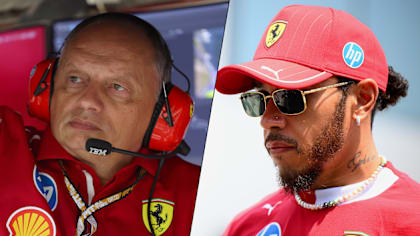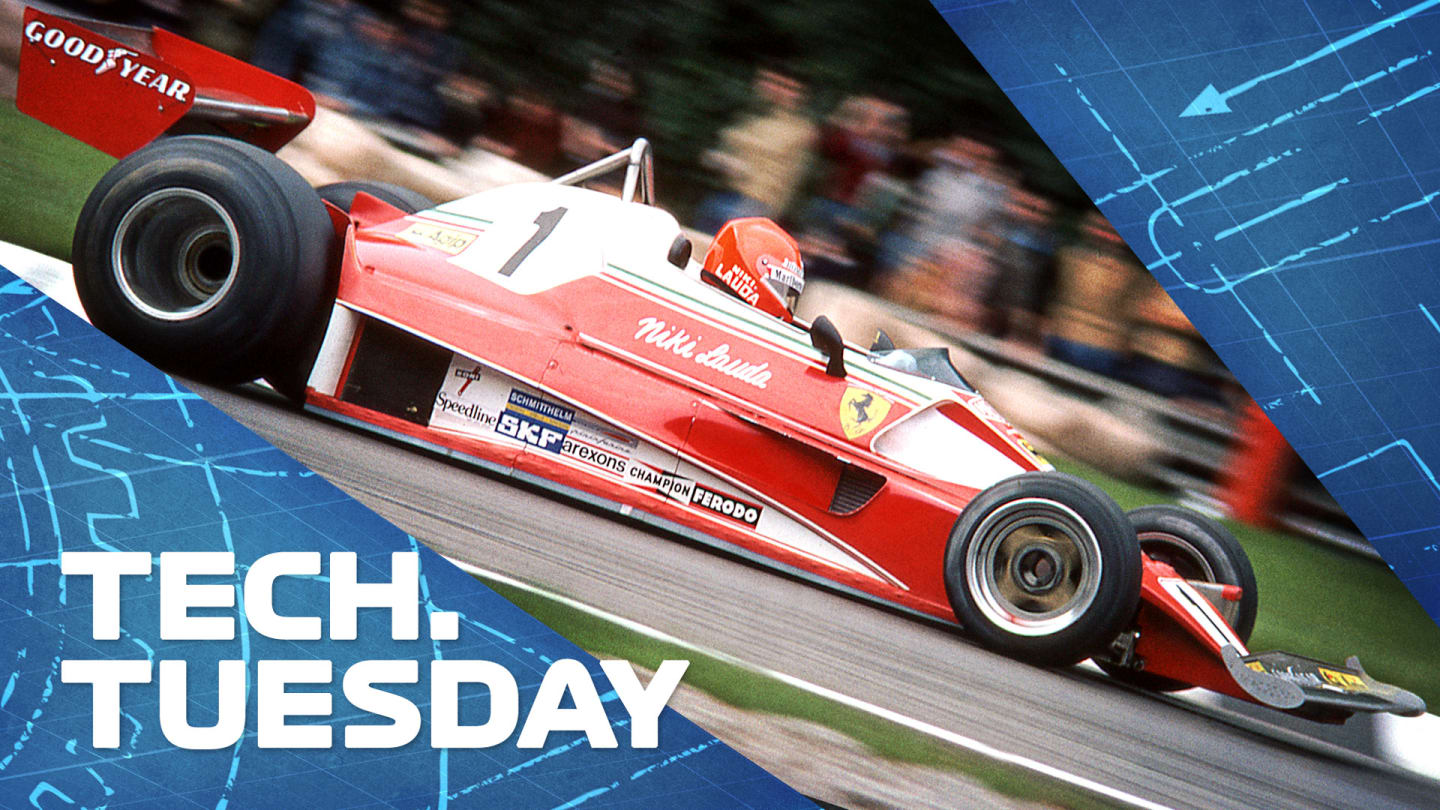
Technical
TECH TUESDAY: Under the bodywork of Mauro Forghieri's masterpiece – the Ferrari 312T

Share

Mauro Forghieri, legendary Ferrari designer of the 1960s and 70s, passed away last week, aged 87. In this week's Tech Tuesday, Mark Hughes takes a close look at the Italian's finest work, the 312 line of Grand Prix and championship-winning Ferraris.
Unlike most of the British designer contemporaries who came to prominence in the kit car era and created chassis around the Cosworth DFV engine, Forghieri was also an engine designer.
OBITUARY: Mauro Forghieri, technical genius behind some of Formula 1’s greatest Ferraris, remembered
His flat-12, created in co-operation with his Ferrari colleague Franco Rocchi, powered the team through the 1970s to four constructors' championships.
When this engine was installed in Forghieri’s 312T chassis for 1975, so was created perhaps the crowning achievement of Forghieri’s long career. It was a car which would go on to dominate the season in the hands of Niki Lauda.
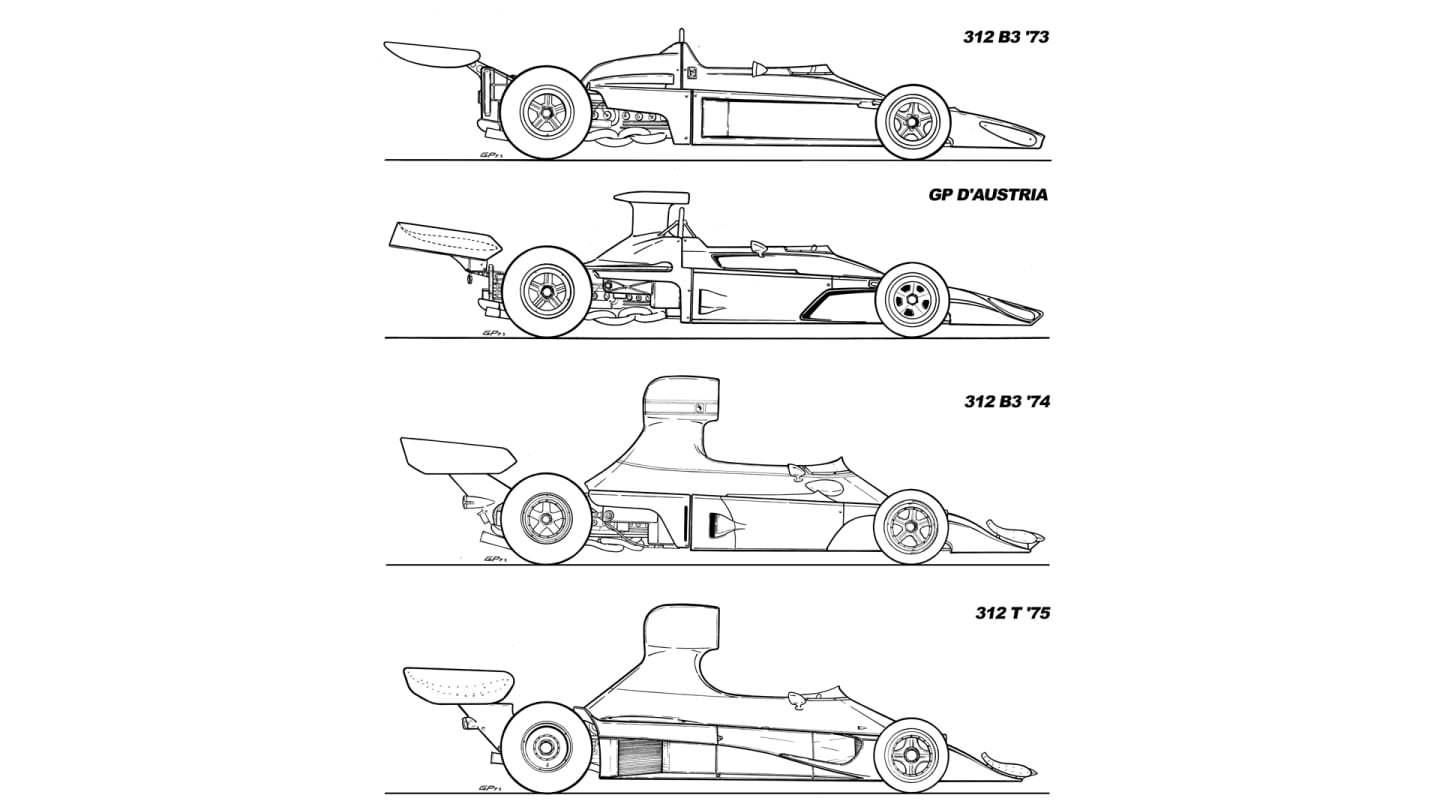
Here we see the evolution of Ferrari from 1973-75, beginning with the original unsuccessful Colombo 312B3 of ’73, Forghieri’s modification of that car to side radiator spec at the Austrian GP of that year and the steady refinement of Forghieri’s centralised mass theme represented by the ’74 version of the 312B3 and the 1975 312T.
Ironically, it was from a moment of crisis in Ferrari history which sent Forghieri on this path. In 1973, with Enzo Ferrari suffering ill-health, Forghieri had been assigned by parent company Fiat to special projects and the initial F1 car of that year was designed by Sandro Colombo, albeit still using the Forghieri flat-12 engine. Quite a radical departure in design for Ferrari, with a short wheelbase and wedge-shaped monocoque, it was disastrously uncompetitive.
By the summer, Enzo Ferrari’s health was improving and upon retaking command, he brought Forghieri back from his special projects where he had been working on a prototype known as the ‘snowplough’ for its distinctive nose, wide body and very short wheelbase.
READ MORE: Under the bodywork of the Ferrari 312B3 on the anniversary of Niki Lauda's first F1 win
Upon being brought back to the racing department Forghieri used the basis of his research with the snowplough to modify the Colombo car, the 312B3. He introduced a distinctive-looking airbox high behind the cockpit to better feed the flat-12, allowing it to breathe better.
He also relocated the radiators to the sides, behind the shoulders of the driver (previously the water radiator had been in the nose and the oil radiator beneath the rear wing). He was seeking to centralise the car’s masses to give it better directional response, a theme he would continue to pursue and would ultimately lead to the transverse gearbox on the 312T, a first for F1.

The key changes Forghieri made to the unsuccessful 1973 312B3 pointed the direction to the dominant 312T of two years later. The radiators (previously front and back) were moved to the sides, the oil tank relocated and the rear wing given a much cleaner presentation for the airflow.
But before the 312T came a further modified version of the 312B3, for 1974, still using the ’73 car’s monocoque. This was the car with which new recruit Niki Lauda would take nine pole positions that year and return Ferrari to the ranks of race winners.
It was a beautiful refinement of that prototype ’73 B3, taking fuller advantage of the side radiators to smooth the body sides and to increase the gap beneath the rear wing, to work it harder. The space freed up at the front he used to incorporate a much bigger delta-shaped wing.
He increased the height of the airbox and – like his snowplough prototype – he made the bodywork very wide. He had found from his time designing Ferrari’s sports racers (312P diagram, below) that the extra bodywork, when run close to the ground, enhanced downforce. Short and wide, it looked as good as it went.
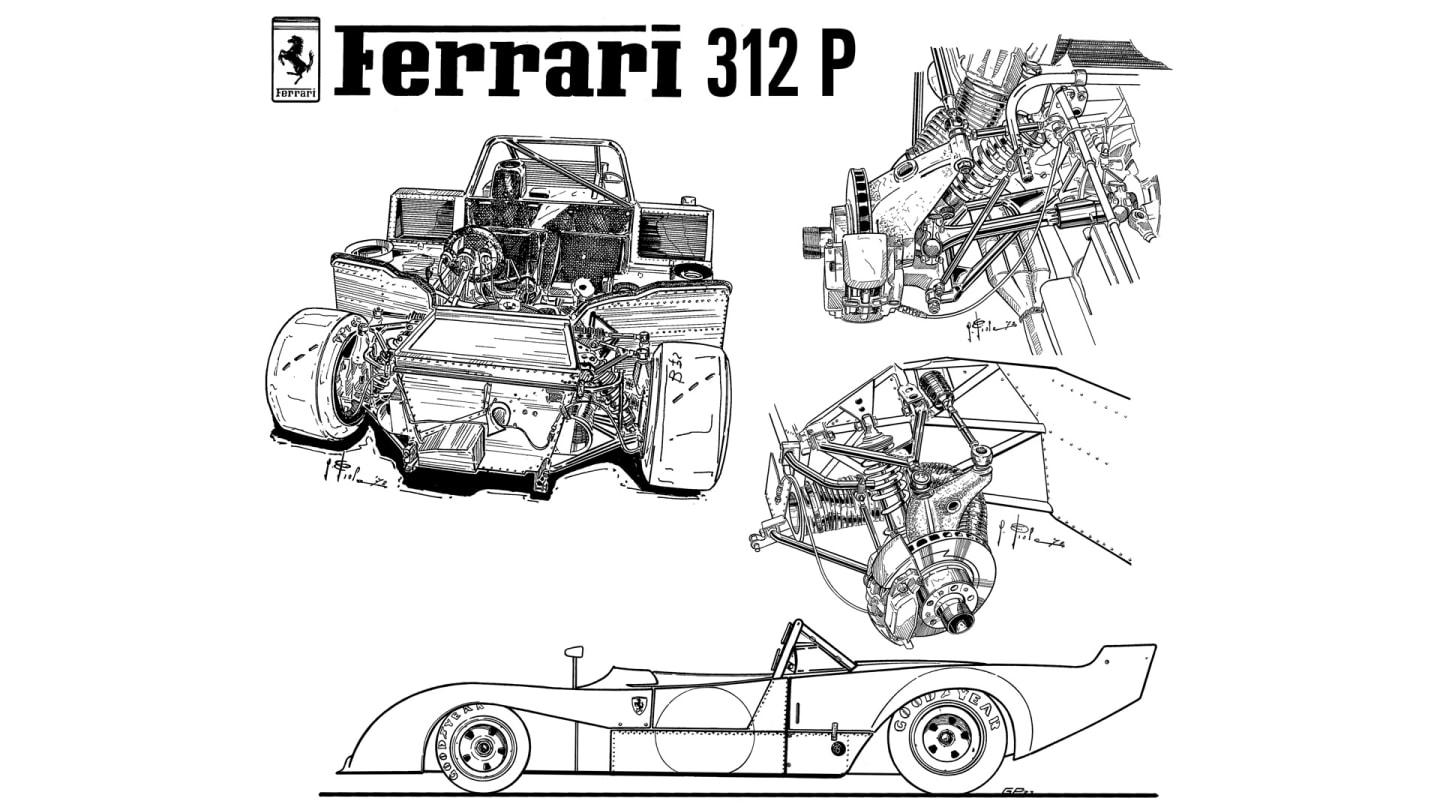
A cross-section of the Forghieri-designed 312P sports car
With the following year’s 312T (3-litre, 12 cylinder, Transversale) he centralised the car’s masses even further with that sideways-sited gearbox.
In other respects it was a further refined version of the ’74 B3, with the radiators now laid more horizontally, allowing a beautifully clean sidepod design which integrated better with the upper bodywork. The front suspension, instead of being mounted on a subframe was now attached directly to the front of the bulkhead from which long, elegant rocker arms extended out to the wheels.
READ MORE: Lauda’s barely believable Monza comeback
With Forghieri’s flat-12 producing more power than the rival Cosworth DFV, the 312T could often carry more wing than the best Cosworth cars and in Lauda’s hands it became almost unbeatable. It continued winning races into the early part of 1976 after which it was replaced by the 312T2 – essentially the same car but modified to meet new dimensional requirements from the Spanish Grand Prix onwards and the banning of airboxes. This car took Lauda to his second world title in 1977.
Forghieri designed many brilliant Ferrari F1 and sports racers, but the 312T perhaps stands as the epitome of his genius.
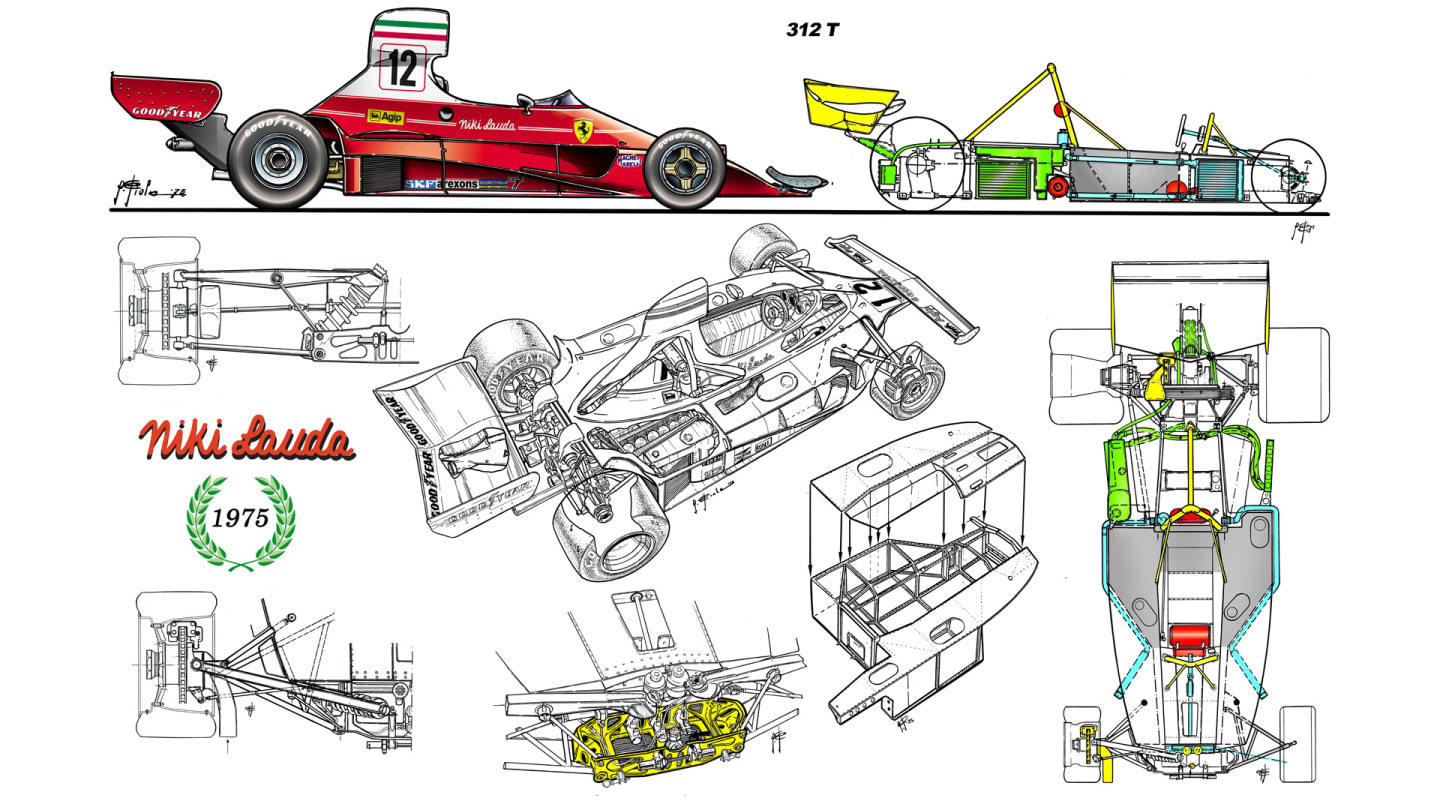
The 1975 312T (above) and the 312T2 (below) which was essentially the same car but modified to meet the new dimensional regulations from the 1976 Spanish Grand Prix onwards.
YOU MIGHT ALSO LIKE
News Horner hails ‘most competitive race to date’ for Red Bull as he insists 'we were quicker' than McLaren in Jeddah
News ‘I’m 2000% behind him’ – Vasseur backs Hamilton amid early Ferrari struggles as he insists ‘potential is there’
News ‘It's all about patience’ – Bortoleto admits transition from F2 title winner to F1 backmarker is ‘not easy’
News Vasseur calls for Ferrari to be more ‘consistent’ as he highlights where team needs to improve


